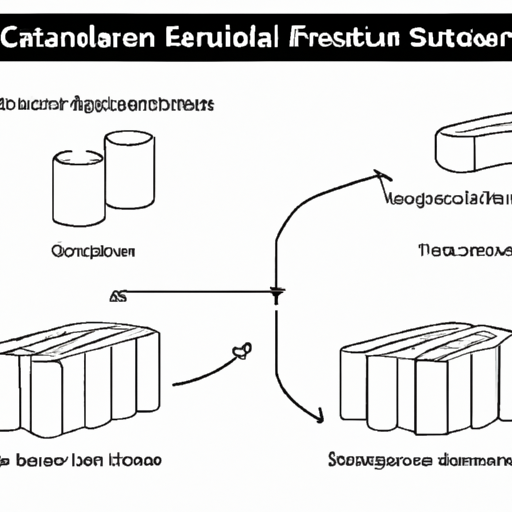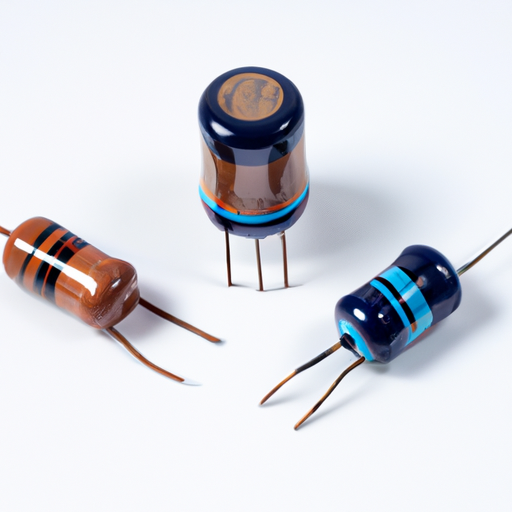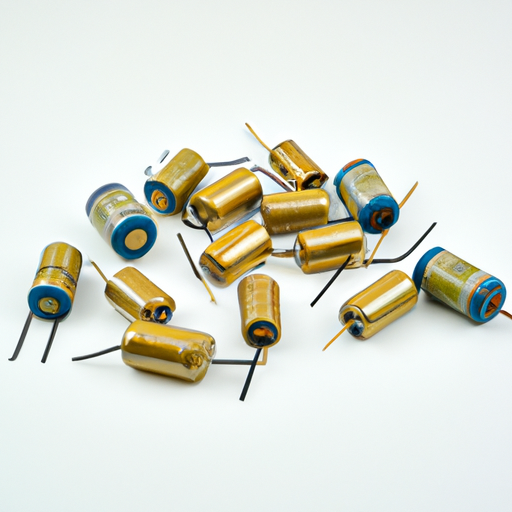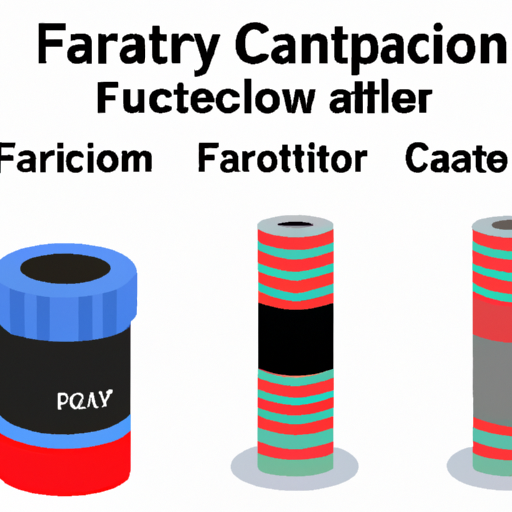What is the mainstream supercapacitor structure production process?
What is the Mainstream Supercapacitor Structure Production Process?
I. Introduction
Supercapacitors, also known as ultracapacitors or electrochemical capacitors, are energy storage devices that bridge the gap between traditional capacitors and batteries. They are characterized by their ability to store and release energy rapidly, making them ideal for applications requiring quick bursts of power. As the demand for efficient energy storage solutions continues to grow, supercapacitors have gained significant attention due to their high power density, long cycle life, and environmental friendliness. This blog post will explore the mainstream production process of supercapacitor structures, detailing the materials, methods, and innovations that define this essential technology.
II. Understanding Supercapacitors
A. Basic Principles of Supercapacitors
Supercapacitors operate on two primary principles: electrochemical double-layer capacitance (EDLC) and pseudocapacitance.
1. **Electrochemical Double-Layer Capacitors (EDLCs)**: EDLCs store energy through the electrostatic separation of charges at the interface between the electrode and the electrolyte. When a voltage is applied, ions from the electrolyte accumulate at the electrode surface, forming a double layer of charge. This mechanism allows for rapid charge and discharge cycles.
2. **Pseudocapacitors**: Pseudocapacitance involves fast redox reactions at the electrode surface, allowing for higher energy storage compared to EDLCs. This mechanism is typically observed in supercapacitors that utilize conductive polymers or metal oxides as electrode materials.
B. Key Components of Supercapacitors
Supercapacitors consist of three main components:
1. **Electrodes**: The electrodes are critical for energy storage and are typically made from high-surface-area materials to maximize charge storage.
2. **Electrolytes**: The electrolyte facilitates ion movement between the electrodes, playing a vital role in the supercapacitor's performance.
3. **Separators**: Separators prevent direct contact between the electrodes while allowing ionic transport, ensuring the safe operation of the supercapacitor.
III. Materials Used in Supercapacitor Production
A. Electrode Materials
The choice of electrode materials significantly impacts the performance of supercapacitors. Common materials include:
1. **Carbon-based Materials**: Activated carbon is the most widely used material due to its high surface area, conductivity, and stability. Other carbon forms, such as graphene and carbon nanotubes, are also gaining popularity for their superior properties.
2. **Conductive Polymers**: Polymers like polyaniline and polypyrrole offer high capacitance and are often used in pseudocapacitors.
3. **Metal Oxides**: Transition metal oxides, such as manganese oxide and ruthenium oxide, are known for their high energy density and are used in hybrid supercapacitors.
B. Electrolyte Types
The electrolyte is crucial for the performance of supercapacitors, with several types available:
1. **Aqueous Electrolytes**: These are commonly used due to their low cost and high ionic conductivity. However, they have a limited voltage window.
2. **Organic Electrolytes**: Offering a wider voltage range and better energy density, organic electrolytes are often used in high-performance applications.
3. **Ionic Liquids**: These electrolytes have excellent thermal stability and a wide electrochemical window, making them suitable for advanced supercapacitor designs.
C. Separator Materials
Separators are essential for preventing short circuits while allowing ion flow. Common materials include:
1. **Porous Membranes**: These are typically made from polymers like polyethylene or polypropylene, providing good ionic conductivity and mechanical strength.
2. **Non-woven Fabrics**: These materials offer high porosity and are often used in conjunction with other separator types to enhance performance.
IV. The Production Process of Supercapacitors
A. Material Preparation
The production of supercapacitors begins with material preparation, which involves:
1. **Sourcing Raw Materials**: High-quality raw materials are sourced from reliable suppliers to ensure optimal performance.
2. **Material Purification and Treatment**: Raw materials undergo purification processes to remove impurities that could affect performance. This may include chemical treatments or physical processes like washing and drying.
B. Electrode Fabrication
The next step is electrode fabrication, which includes:
1. **Mixing and Coating Processes**: The active materials, conductive additives, and binders are mixed to form a slurry, which is then coated onto a current collector, typically made of aluminum or copper.
2. **Drying and Curing**: The coated electrodes are dried to remove solvents and cured to enhance adhesion and stability.
3. **Cutting and Shaping Electrodes**: Once dried, the electrodes are cut into the desired shapes and sizes, ready for assembly.
C. Assembly of Supercapacitors
The assembly process involves:
1. **Layering of Electrodes and Separators**: The prepared electrodes are layered with separators to create a cell structure.
2. **Filling with Electrolyte**: The assembled cells are filled with the chosen electrolyte, ensuring complete saturation for optimal performance.
3. **Sealing and Packaging**: The cells are sealed to prevent leakage and packaged for distribution, ensuring they are protected during transport and storage.
D. Testing and Quality Control
Quality control is critical in supercapacitor production, involving:
1. **Performance Testing**: Each supercapacitor is tested for capacitance, energy density, and power density to ensure it meets specifications.
2. **Safety Assessments**: Safety tests are conducted to evaluate the risk of thermal runaway, leakage, and other potential hazards.
3. **Final Quality Checks**: A final inspection ensures that all components are correctly assembled and functioning as intended.
V. Innovations in Supercapacitor Production
A. Advances in Materials Science
Recent advancements in materials science have led to the development of new electrode materials and electrolytes that enhance the performance of supercapacitors. Research into nanomaterials, such as graphene and carbon nanotubes, has shown promise in increasing energy density and reducing production costs.
B. Automation and Efficiency Improvements
The integration of automation in the production process has improved efficiency and consistency. Automated mixing, coating, and assembly processes reduce human error and increase production speed, allowing manufacturers to meet growing demand.
C. Sustainable Production Practices
As environmental concerns rise, manufacturers are exploring sustainable practices in supercapacitor production. This includes using eco-friendly materials, reducing waste, and implementing recycling programs for end-of-life supercapacitors.
VI. Challenges in Supercapacitor Production
A. Cost of Materials
The cost of high-performance materials, particularly advanced carbon materials and metal oxides, can be a significant barrier to widespread adoption. Manufacturers are continually seeking cost-effective alternatives without compromising performance.
B. Scalability of Production
Scaling up production while maintaining quality and performance is a challenge for many manufacturers. Developing efficient processes that can be replicated at larger scales is essential for meeting market demand.
C. Environmental Concerns
The production of supercapacitors can have environmental impacts, particularly concerning the sourcing of raw materials and waste management. Addressing these concerns is crucial for the long-term sustainability of the industry.
VII. Future Trends in Supercapacitor Production
A. Emerging Technologies
Emerging technologies, such as solid-state supercapacitors and hybrid systems that combine supercapacitors with batteries, are expected to revolutionize the energy storage landscape. These innovations promise higher energy densities and improved safety.
B. Market Growth and Demand
The global demand for energy storage solutions is projected to grow significantly, driven by the rise of electric vehicles, renewable energy integration, and portable electronics. Supercapacitors are well-positioned to meet this demand due to their unique advantages.
C. Integration with Renewable Energy Sources
As the world shifts towards renewable energy, supercapacitors will play a crucial role in energy storage systems, providing rapid response capabilities to balance supply and demand.
VIII. Conclusion
In summary, the production process of supercapacitors involves a complex interplay of materials, fabrication techniques, and quality control measures. As the demand for efficient energy storage solutions continues to rise, ongoing research and development will be essential in overcoming challenges and driving innovation. The future of supercapacitors looks promising, with advancements in technology and materials paving the way for their integration into a sustainable energy landscape. As we move forward, supercapacitors will undoubtedly play a vital role in shaping the future of energy storage solutions.






